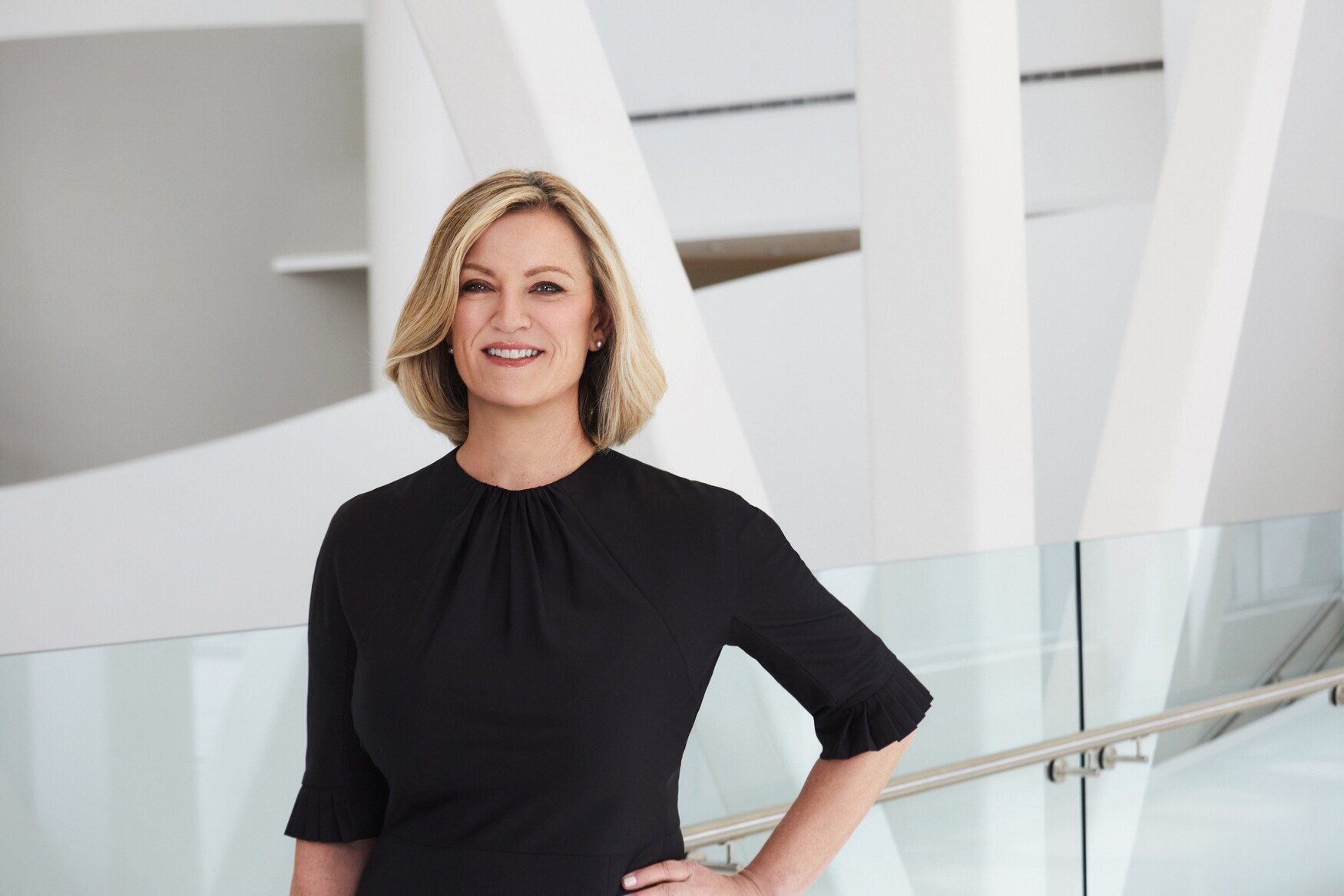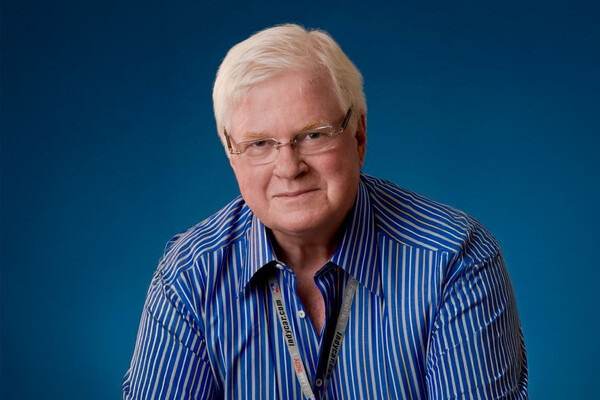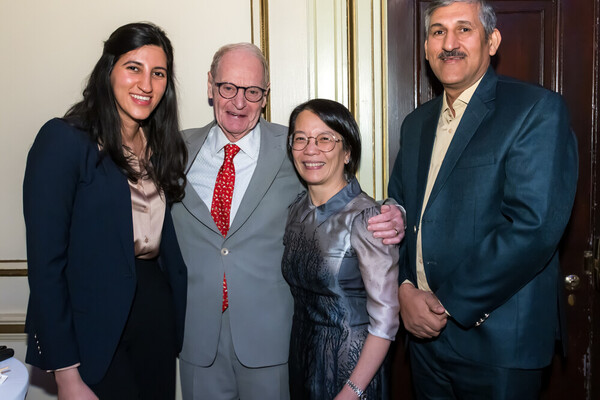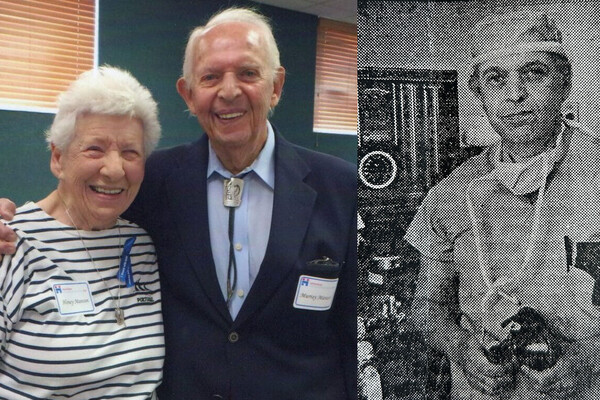Main Second Level Navigation
Breadcrumbs
- Home
- News & Events
- Recent News
- Tackling Transformation: Heather McPherson
Tackling Transformation: Heather McPherson

Newly-appointed president and CEO of Women's College Hospital, Heather McPherson has already led change and innovation in her role as Executive Vice President of Patient Care and Ambulatory Innovation, shepherding the hospital into its new building and implementing an electronic health record, among many other accomplishments. Twice a U of T graduate, first as an occupational therapist and later as a Master of Science through the Rehabilitation Sciences Institute (formerly the Graduate Department of Rehabilitation Science), McPherson is also a lecturer in the Department of Occupational Science and Occupational Therapy.
Our vision is to revolutionize health care for a healthier and more equitable world.
Newly-appointed president and CEO of Women's College Hospital (WCH), Heather McPherson speaks about her plans as CEO, her background in occupational therapy at U of T and the advice she would give to students interested in management roles.
Congratulations on your new role as CEO. What are your plans?
The hospital has a new strategic plan, so my first priority is putting this strategy into action. Our vision is to revolutionize health care for a healthier and more equitable world. This direction builds on all the innovation we’ve implemented over the last ten years, which has made Women’s College Hospital such an extraordinary place.
Our focus is on improving health equity and developing solutions for the most urgent issues facing our health system today. We’re finding ways to make health care more accessible for everyone and to alleviate some of the pressures on the system, like over-crowded emergency rooms and reducing surgery wait times. For example, we’re exploring how we can take advantage of digital healthcare tools and virtual care models to deliver services and treatments in a more efficient, accessible way.
You come to the CEO role after several years as Executive Vice-President of Patient Services. What was your focus in that role?
My focus was looking at health gaps and then creating services and programs to close those gaps in patient care for the people who needed them most. I was responsible for overseeing all the clinical programs in the hospital, so I saw where the areas of biggest need were.
There are many examples, for instance, to help battle the existing opioid crisis, we created our RAAM (Rapid Access Addiction Medicine) Clinics – where people dealing with substance use issues can see a physician, right away, without an appointment, to get the care they need. And, then we expanded that model across the province, so other clinics in Ontario can deliver the same care to their populations.
Another gap is access to transition-related surgeries for our transgender communities. Ontario didn’t have a publicly-funded hospital doing Transition Related Surgeries (TRS) – most surgery had to be done out of the province or country. So we created a TRS program at WCH where our teams are providing high-quality, inclusive trans healthcare in a safe and culturally sensitive environment which has been overlooked in this community for decades.
We are also working in collaboration with Indigenous communities to implement “Wise Practices” for Reconciliation, working with experts in Indigenous healing to create programs to meet this community’s specific needs and ensure our hospital is known as a safe and welcoming space. Closing the health gaps will continue to be a priority for me in my new role as CEO as well.
Before that, you helped move Women’s College Hospital into its new space. What was your vision?
The challenge was how to get from where we were, in a 100-year-old building that didn’t meet our patients’ needs, to a new, modern building that would accommodate our clinical requirements. I took the opportunity to look around the world and see what the leading models of ambulatory care were so we could design a space to reflect those models. We then set out to change our own internal models of care, from operating room to clinic design, and adapt traditional in-patient models for an ambulatory, or out-patient, setting. The overall objective was how to create a one-stop, patient-centric environment.
What first interested you about occupational therapy and what motivated you to pursue leadership positions?
My interest in occupational therapy was understanding the intersection of psycho-social and physical issues and how they work together. That helped me in program development throughout my career, knowing you need to address broader determinants of health.
My larger motivation has always been to improve the system. When I was a clinician, I focused on how to enhance the patient experience and the coordination of care. And I'm someone who always put her hand up when there were things to be done. I saw where there were other opportunities for improvement and I was determined to go beyond the status quo.
Once I got into more senior management roles, I saw what was possible when you empower teams to take charge. Helping people see what's possible energizes them to actually make change.
You attended U of T twice, once as an undergraduate and once as graduate student. How did your experiences compare and why did you want to come back?
There was quite a difference. In my undergrad, I still had to go to the library to get books — when I did my Master’s as a mature student, everything was online! By that time, I’d also been working in academic hospitals my whole career, and I wanted to gain a greater understanding of research, so my graduate studies helped me with that.
What advice do you have for current Faculty of Medicine students?
Try different things and always put your hand up. There's always opportunity to participate in projects outside of your clinical and academic work, like sitting on committees. These things do take extra time, but they really help you think differently, give you perspective and allow you to start contributing.
I would also recommend volunteering in a related sector to try to understand other parts of the system. I'm Chair of the board of directors for Planned Parenthood Toronto, and it’s been invaluable for me over the years. It’s provided me with a well-rounded perspective on people and systems.
In conversation with Suzanne Bowness
News


